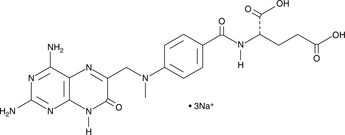Proteases
Proteases is a general term for a class of enzymes that hydrolyze protein peptide chains. According to the way they degrade polypeptides, they are divided into two categories: endopeptidases and telopeptidases. The former can cut the large molecular weight polypeptide chain from the middle to form prions and peptones with smaller molecular weights; the latter can be divided into carboxypeptidase and aminopeptidase, which respectively remove the peptide from the free carboxyl terminus or free amino terminus of the polypeptide one by one. Chain hydrolysis produces amino acids.
A general term for a class of enzymes that hydrolyze peptide bonds in proteins. According to the way they hydrolyze polypeptides, they can be divided into endopeptidases and exopeptidases. Endopeptidase cleaves the interior of the protein molecule to form smaller molecular weight peptones and peptones. Exopeptidase hydrolyzes peptide bonds one by one from the end of the free amino group or carboxyl group of protein molecules, and frees amino acids, the former is aminopeptidase and the latter is carboxypeptidase. Proteases can be classified into serine proteases, sulfhydryl proteases, metalloproteases and aspartic proteases according to their active centers and optimum pH. According to the optimum pH value of its reaction, it is divided into acidic protease, neutral protease and alkaline protease. The proteases used in industrial production are mainly endopeptidases.
Proteases are widely found in animal offal, plant stems and leaves, fruits and microorganisms. Microbial proteases are mainly produced by molds and bacteria, followed by yeast and actinomycetes.
Enzymes that catalyze the hydrolysis of proteins. There are many kinds, the important ones are pepsin, trypsin, cathepsin, papain and subtilisin. Proteases have strict selectivity for the reaction substrates they act on. A protease can only act on certain peptide bonds in protein molecules, such as the peptide bonds formed by the hydrolysis of basic amino acids catalyzed by trypsin. Proteases are widely distributed, mainly in the digestive tract of humans and animals, and are abundant in plants and microorganisms. Due to limited animal and plant resources, the industrial production of protease preparations is mainly prepared by fermentation of microorganisms such as Bacillus subtilis and Aspergillus terrestris.
Ziele für Proteases
- Caspase(114)
- Aminopeptidase(24)
- ACE(74)
- Calpains(20)
- Carboxypeptidase(10)
- Cathepsin(81)
- DPP-4(31)
- Elastase(26)
- Gamma Secretase(67)
- HCV Protease(59)
- HSP(113)
- HIV Integrase(37)
- HIV Protease(47)
- MMP(228)
- NS3/4a protease(8)
- Serine Protease(18)
- Thrombin(58)
- Urokinase(4)
- Cysteine Protease(0)
- Other Proteases(18)
- Tyrosinases(47)
- 15-PGDH(1)
- Acetyl-CoA Carboxylase(13)
- Acyltransferase(59)
- Aldehyde Dehydrogenase (ALDH)(28)
- Aminoacyl-tRNA Synthetase(9)
- ATGL(1)
- Dipeptidyl Peptidase(56)
- Drug Metabolite(457)
- E1/E2/E3 Enzyme(90)
- Endogenous Metabolite(1636)
- FABP(30)
- Farnesyl Transferase(23)
- Glutaminase(14)
- Glutathione Peroxidase(14)
- Isocitrate Dehydrogenase (IDH)(28)
- Lactate Dehydrogenase(17)
- Lipoxygenase(234)
- Mitochondrial Metabolism(207)
- NEDD8-activating Enzyme(7)
- Neprilysin(12)
- PAI-1(13)
- Ser/Thr Protease(41)
- Tryptophan Hydroxylase(13)
- Xanthine Oxidase(18)
- MALT1(10)
- PCSK9(1)
Produkte für Proteases
- Bestell-Nr. Artikelname Informationen
-
GC40378
5(S)-HEPE
5(S)-HEPE is produced by 5-lipoxygenase catalyzed oxidation of eicosapentaenoic acid (EPA).

-
GC40460
5(S)-HETE
5(S)-HETE is produced by the action of 5-LO on arachidonic acid to give 5(S)-HpETE, followed by reduction of the hydroperoxide.

-
GC40829
5(S)-HETE lactone
5(S)-HETE lactone is a cyclic ester formed by acid-catalyzed nucleophilic addition of the C-5 hydroxyl to the C-1 carboxyl of 5(S)-HETE.
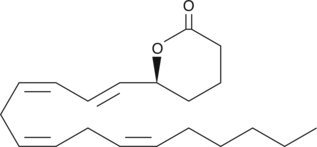
-
GC46679
5(S)-HETE-d8
An internal standard for the quantification of 5-HETE

-
GC42479
5(S)-HETrE
5(S)-HETrE is produced by the action of 5-LO when mead acid is the substrate.

-
GC41105
5(S)-HpEPE
5(S)-HpEPE is a monohydroperoxy polyunsaturated fatty acid produced by the action of 5-LO on EPA.

-
GC40784
5(Z),8(Z),14(Z)-Eicosatrienoic Acid
5(Z),8(Z),14(Z)-Eicosatrienoic acid is a polyunsaturated fatty acid that can be a substrate for 5-lipoxygenase (5-LO).

-
GC40830
5,6-dehydro Arachidonic Acid
5,6-dehydro Arachidonic acid is an analog of arachidonic acid with an acetylene in the 5,6 position.

-
GC18542
5,6-dihydro-5-Fluorouracil
5,6-dihydro-5-Fluorouracil (5-FUH2) is formed by the hydrogenation of 5-fluorouracil via the enzyme dihydropyrimidine dehydrogenase (DPD).
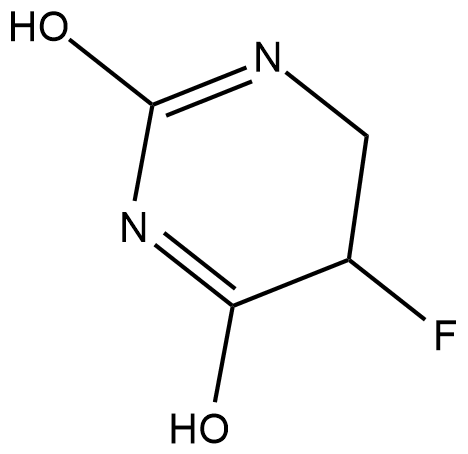
-
GC35152
5,6-Dihydro-5-methyluracil
5,6-Dihydro-5-methyluracil (Dihydrothymin), ein Zwischenprodukt des Abbaus von Thymin, stammt von Tieren oder Pflanzen.
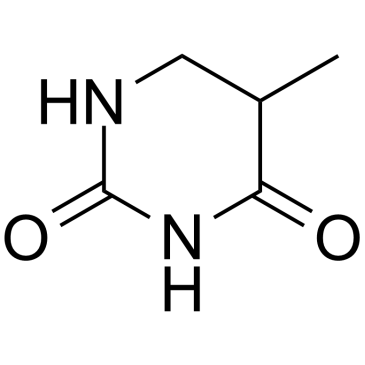
-
GC33650
5,6-Dihydrouracil
5,6-Dihydrouracil (5,6-5,6-Dihydrouracil), ein Metabolit von Uracil, kann als Marker zur Identifizierung eines Mangels an Dihydropyrimidindehydrogenase (DPD) verwendet werden.
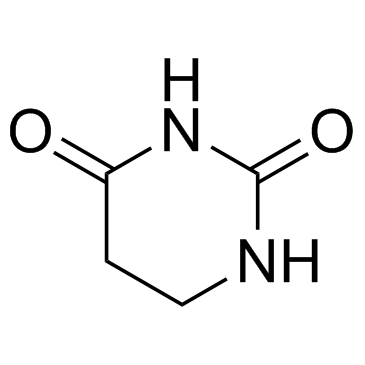
-
GC33502
5,6-Dihydrouridine
5,6-Dihydrouridin ist eine modifizierte Base, die in konservierten Positionen in der D-Schleife von tRNA in Bakterien, Eukaryota und einigen Archaeen vorkommt.
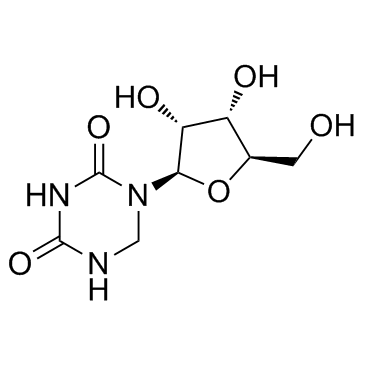
-
GC42484
5,6-dihydroxy Indole
5,6-Dihydroxyindol, ein Melaninvorläufer, hat ein breites Spektrum an antibakterieller, antimykotischer, antiviraler und antiparasitärer Aktivität.

-
GC38286
5,6-Dimethyl-1H-benzo[d]imidazole
5,6-Dimethyl-1H-benzo[d]imidazol ist ein kÖrpereigener Metabolit.
![5,6-Dimethyl-1H-benzo[d]imidazole Chemical Structure 5,6-Dimethyl-1H-benzo[d]imidazole Chemical Structure](/media/struct/GC3/GC38286.png)
-
GC18466
5,6-epoxy-13-cis Retinoic Acid
5,6-epoxy-13-cis Retinoic acid is a metabolite of 13-cis retinoic acid.
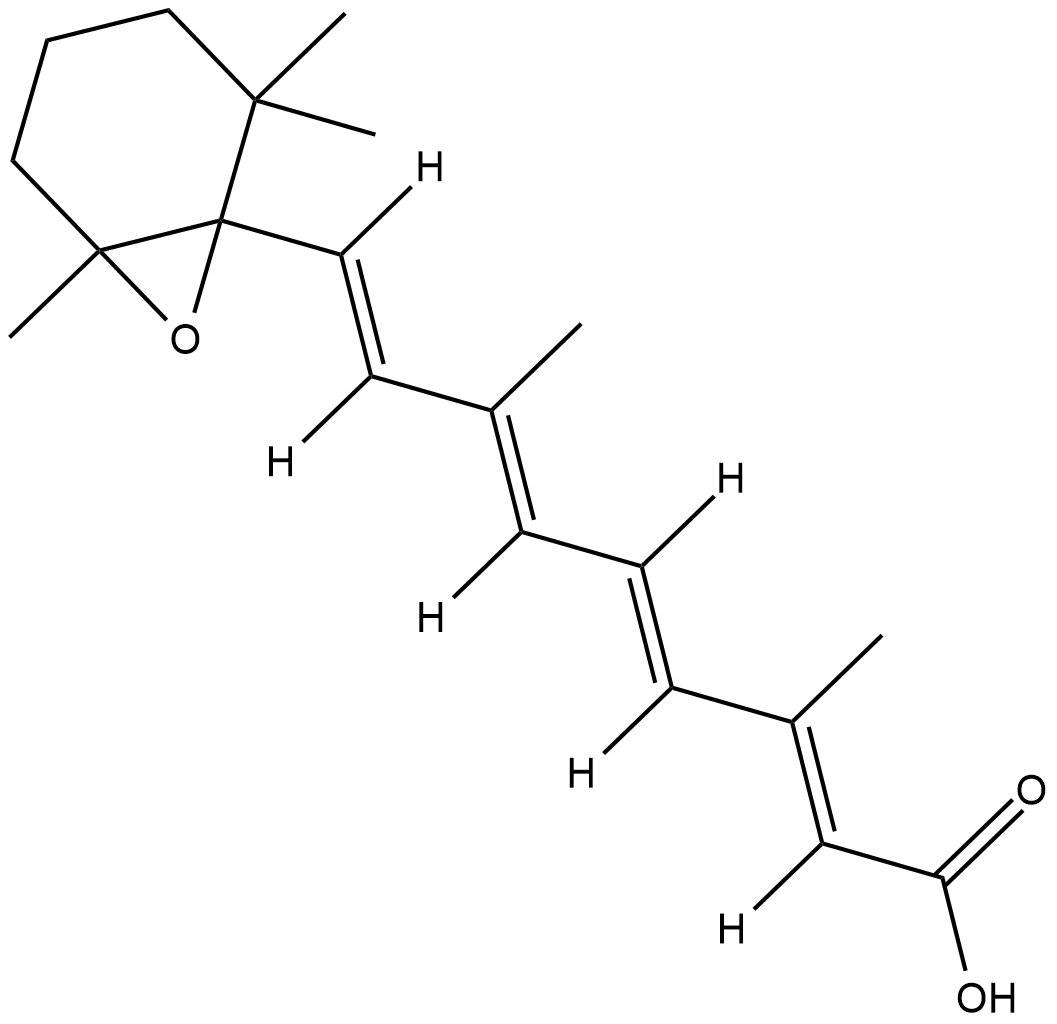
-
GC35150
5,7,4'-Trimethoxyflavone
5,7,4'-Trimethoxyflavon wird aus Kaempferia parviflora (KP) isoliert, einer berühmten Heilpflanze aus Thailand. 5,7,4'-Trimethoxyflavon induziert Apoptose, wie durch Inkremente der Sub-G1-Phase, DNA-Fragmentierung, Annexin-V/PI-Färbung, das Bax/Bcl-xL-Verhältnis, proteolytische Aktivierung von Caspase-3 und Abbau von Poly belegt wird (ADP-Ribose)-Polymerase (PARP)-Protein.5,7,4'-Trimethoxyflavon ist bei der konzentrationsabhängigen Hemmung der Proliferation von menschlichen SNU-16-Magenkrebszellen signifikant wirksam.
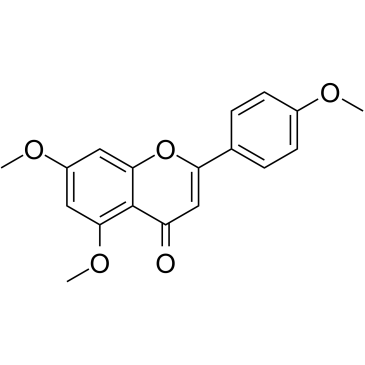
-
GN10629
5,7-dihydroxychromone
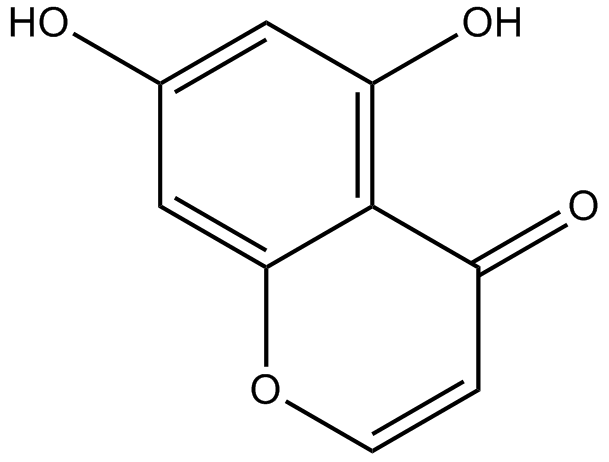
-
GC52227
5-(3',4'-Dihydroxyphenyl)-γ-Valerolactone
An active metabolite of various polyphenols

-
GC38882
5-ALA benzyl ester hydrochloride
5-ALA-Benzylesterhydrochlorid (Benzyl-ALA-Hydrochlorid) ist ein Protoporphyrin-VorlÄufer, der als Photodetektionsmittel verwendet wird. 5-ALA-Benzylesterhydrochlorid induziert die Akkumulation von Protoporphyrin IX (PPIX) in Kolonkarzinom-Zelllinien.
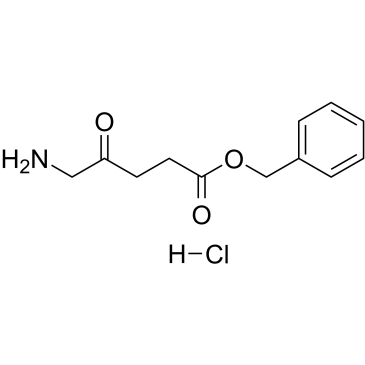
-
GC35156
5-Amino-3H-imidazole-4-Carboxamide
5-Amino-3H-imidazol-4-carboxamid (AICA) ist eine wichtige Vorstufe fÜr die Synthese von Purinen im Allgemeinen und der Nukleobasen Adenin und Guanin im Besonderen.
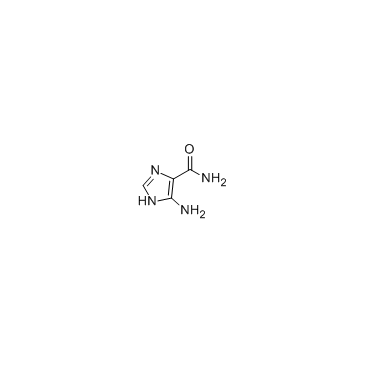
-
GC32608
5-Amino-4-oxopentanoic acid
5-Amino-4-oxopentansÄure (5-ALA) ist eine Nicht-Protein-AminosÄure, die eine geschwindigkeitsbestimmende Rolle bei der HÄm-Biosynthese spielt.
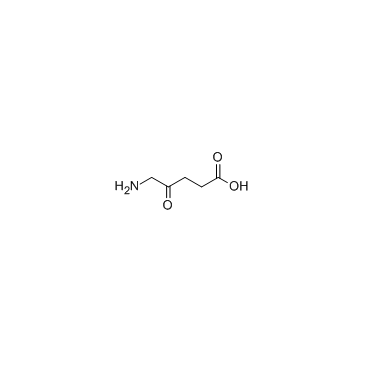
-
GC45356
5-Aminolevulinic Acid (hydrochloride)

-
GC52413
5-Aminosalicylic Acid-d7
An internal standard for the quantification of 5-aminosalicylic acid

-
GC12713
5-Aminovaleric acid hydrochloride
Es wird angenommen, dass 5-AminovaleriansÄurehydrochlorid als Methylenhomologe von Gamma-AminobuttersÄure (GABA) wirkt und als schwacher GABA-Agonist fungiert.
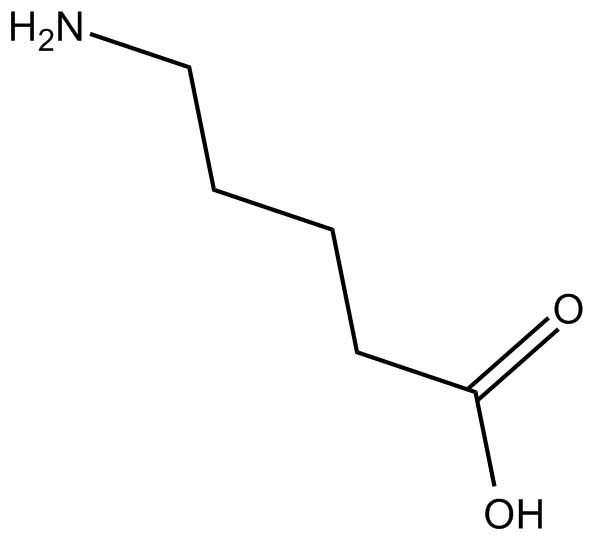
-
GN10062
5-HTP

-
GC49655
5-hydroxy Buspirone
A metabolite of buspirone

-
GC42546
5-hydroxy Diclofenac
5-hydroxy Diclofenac is a metabolite of the NSAID diclofenac formed by the cytochrome P450 (CYP) isoform CYP3A4.

-
GC49119
5-hydroxy Flunixin
A metabolite of flunixin

-
GC49315
5-hydroxy Indomethacin
A metabolite of indomethacin

-
GC41312
5-hydroxy Omeprazole
5-hydroxy Omeprazole is a major metabolite of omeprazole, an inhibitor of the gastric H+/K+-ATPase pump.
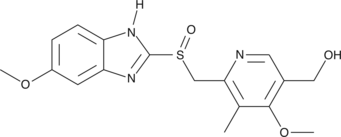
-
GC42549
5-hydroxy Thiabendazole
5-hydroxy Thiabendazole (5-OH TBZ) is a major metabolite of the anthelmintic thiabendazole.

-
GC12829
5-hydroxy Tryptophol
5-Hydroxy-Tryptophol ist ein Serotonin-Metabolit von Säugetieren, der als Marker für akuten Alkoholkonsum dient.
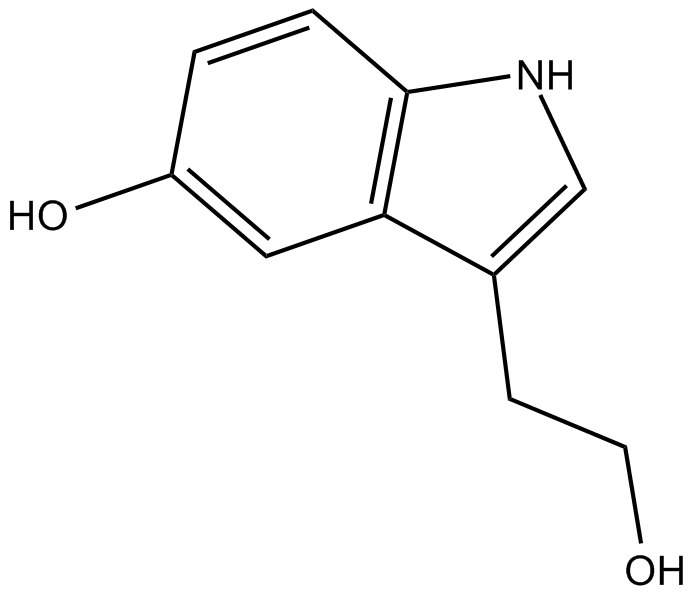
-
GC60529
5-Hydroxy-2'-deoxyuridine
5-Hydroxy-2'-desoxyuridin (5-OHdU) ist ein stabiles Hauptoxidationsprodukt von 2'-Desoxycytidin.
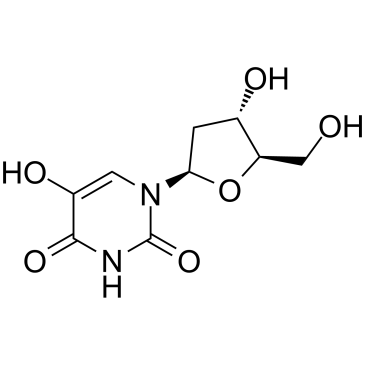
-
GC42550
5-hydroxy-6-methoxy (S)-Duloxetine
5-hydroxy-6-methoxy (S)-Duloxetine is a metabolite of (S)-duloxetine.

-
GC30613
5-Hydroxydopamine hydrochloride
5-Hydroxydopamin ist ein natÜrlich vorkommendes Amin im menschlichen Urin.
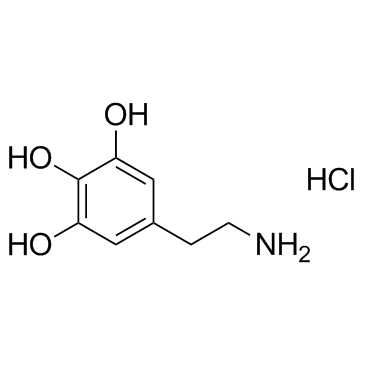
-
GC33698
5-Hydroxyindole-3-acetic acid
5-Hydroxyindol-3-EssigsÄure ist der Hauptmetabolit von Serotonin oder Metanephrinen, die als Biomarker fÜr neuroendokrine Tumore verwendet werden kÖnnen.
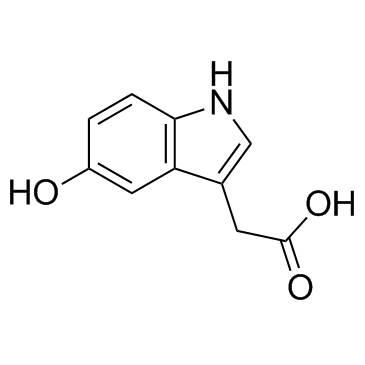
-
GC42551
5-hydroxymethyl Tolterodine (formate)
5-hydroxymethyl Tolterodine is an active metabolite of the muscarinic acetylcholine receptor antagonists tolterodine and fesoterodine.

-
GC30189
5-Hydroxymethyl-2-furancarboxylic acid
5-Hydroxymethyl-2-furancarbonsÄure ist der Hauptmetabolit von 5-Hydroxymethyl-2-furfural (HMF) im KÖrper und wird renal ausgeschieden.
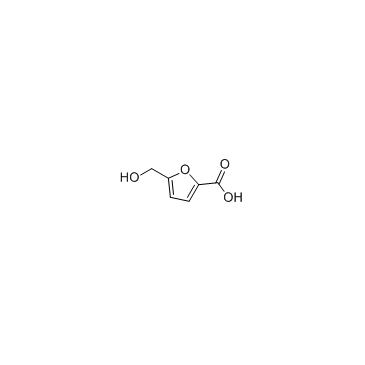
-
GC33613
5-Hydroxymethyluracil
5-Hydroxymethyluracil ist ein Produkt oxidativer DNA-SchÄden.
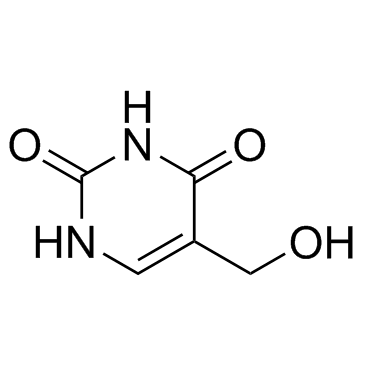
-
GC62810
5-Hydroxytryptamine creatinine sulfate monohydrate
5-Hydroxytryptamin-Kreatininsulfat-Monohydrat ist ein kÖrpereigener Metabolit.
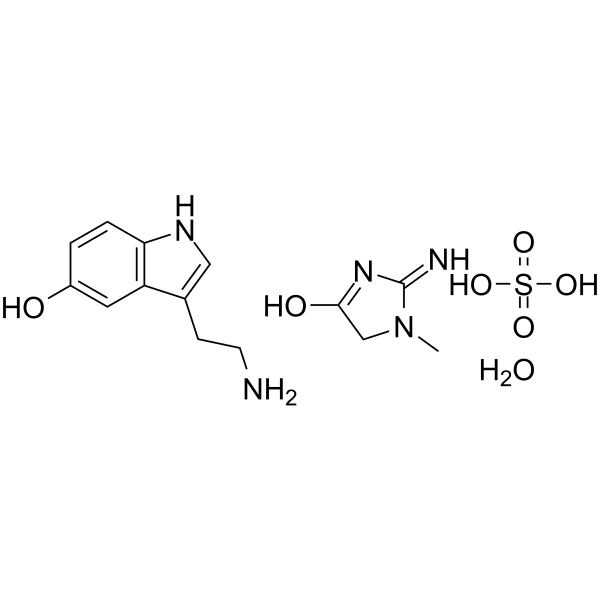
-
GC67951
5-Hydroxytryptophol-d4
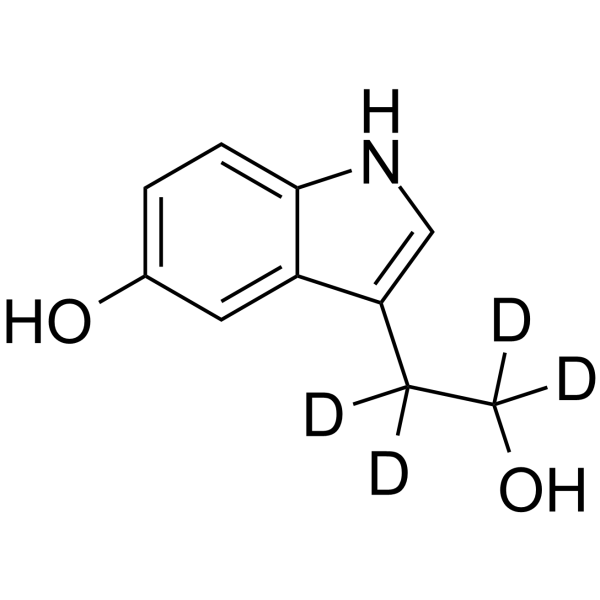
-
GC31997
5-Lipoxygenase-In-1
5-Lipoxygenase-In-1 ist ein 5-Lipoxygenase-Inhibitor, extrahiert aus Patent EP 331232 A2, Tabelle 4, Verbindungsbeispiel 4.10.
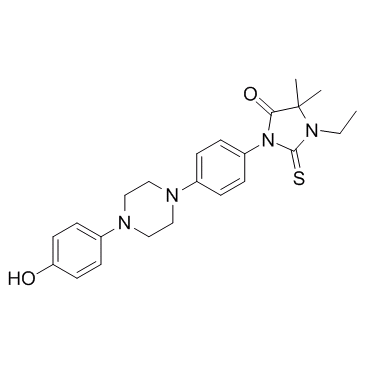
-
GC66031
5-LOX-IN-1
5-LOX-IN-1 (Verbindung 2b) ist ein Inhibitor der humanen 5-Lipoxygenase (5-LOX) mit einem IC50-Wert von 2,3 μM. 5-LOX-IN-1 kann zur Erforschung von EntzÜndungen eingesetzt werden.
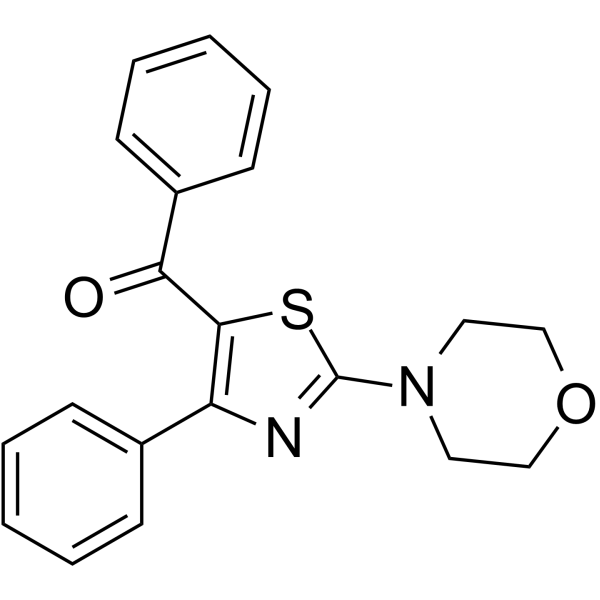
-
GC62811
5-Methoxy-5-oxopentanoic acid
5-Methoxy-5-oxopentansÄure ist ein kÖrpereigener Metabolit.
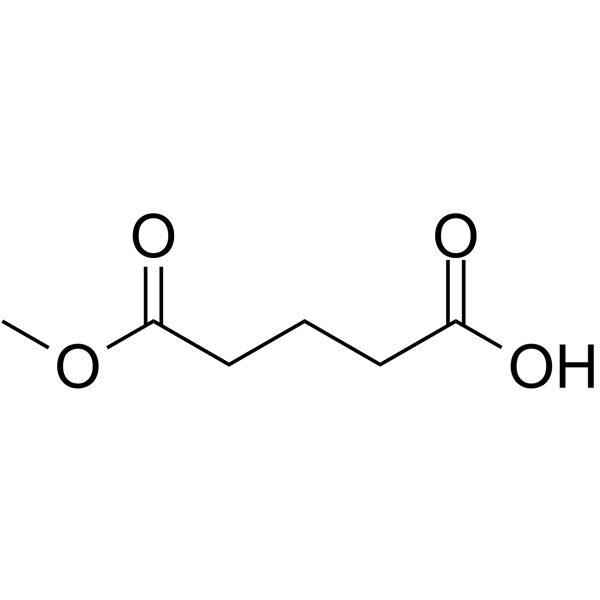
-
GC38058
5-Methoxy-DL-tryptophan
5-Methoxy-DL-Tryptophan ist ein kÖrpereigener Metabolit.
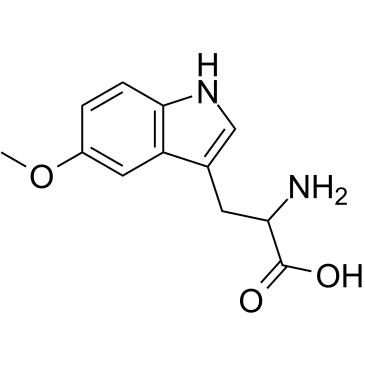
-
GC46078
5-Methoxyindole-3-acetic acid
5-Methoxyindol-3-EssigsÄure ist ein Metabolit von Melatonin.

-
GC64182
5-Methoxytryptamine hydrochloride
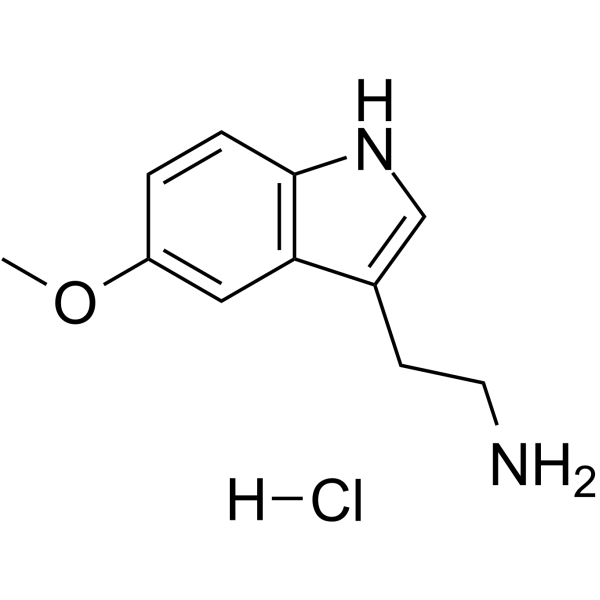
-
GC30712
5-Methoxytryptophol
5-Methoxytryptophol ist ein natÜrliches Indol, das in der ZirbeldrÜse vorkommt.
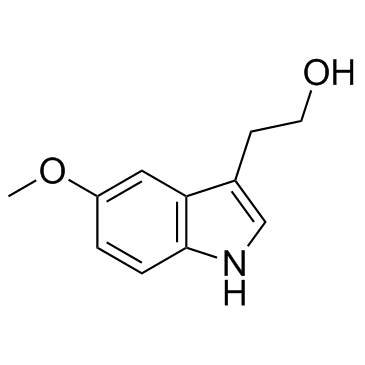
-
GC42562
5-Methyl-2'-deoxycytidine
5-Methyl-2'-desoxycytidin in einzelstrÄngiger DNA kann in cis wirken, um die De-novo-DNA-Methylierung zu signalisieren.

-
GC33526
5-Methylcytidine
5-Methylcytidin ist ein Pyrimidinnukleosid, das in mehreren BioflÜssigkeiten nachgewiesen wird.
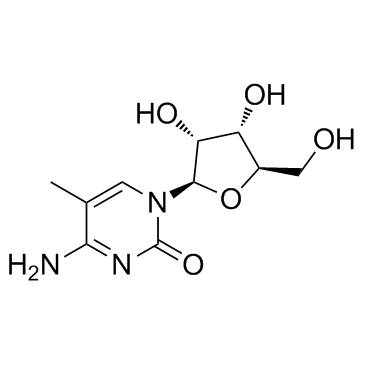
-
GC35166
5-Methylcytosine
5-Methylcytosin ist eine gut charakterisierte DNA-Modifikation und kommt auch Überwiegend in zahlreichen nichtkodierenden RNAs sowohl in Prokaryoten als auch in Eukaryoten vor.
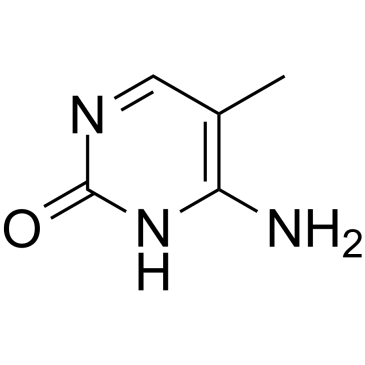
-
GC34881
5-Methyltetrahydrofolic acid
5-MethyltetrahydrofolsÄure (5-Methyl-THF) ist eine biologisch aktive Form von FolsÄure.
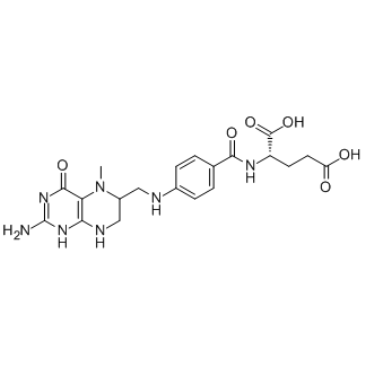
-
GC33514
5-Methyluridine
5-Methyluridin ist ein endogenes methyliertes Nukleosid, das in menschlichen FlÜssigkeiten vorkommt.
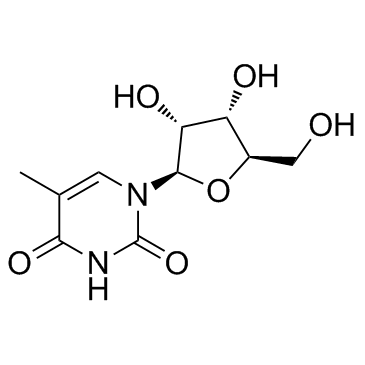
-
GC68228
5-Nitro-1,10-phenanthroline

-
GC35168
5-O-Demethylnobiletin
5-O-Demethylnobiletin (5-Demethylnobiletin), ein aus Sideritis tragoriganum isoliertes Polymethoxyflavon, ist eine direkte Hemmung von 5-LOX (IC50=0,1 μM), ohne die Expression von COX-2 zu beeinflussen.
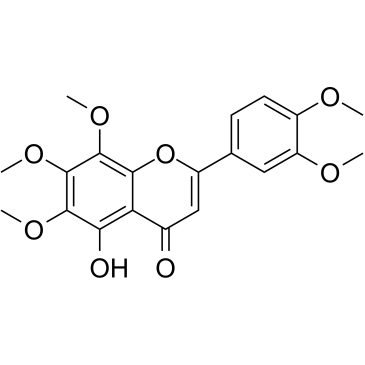
-
GC41310
5-Octyl-α-ketoglutarate
In addition to its role in the Krebs cycle, α-ketoglutarate (2-oxoglutarate) has roles as a substrate or modulator of enzymes.

-
GC40380
5-OxoETE
5-OxoETE is a polyunsaturated keto acid formed by the oxidation of 5-HETE in human neutrophils by a specific dehydrogenase.

-
GC41322
5-OxoETE methyl ester
5-OxoETE methyl ester is an esterified form of the polyunsaturated keto acid 5-oxoETE.

-
GC62814
5-Phenylvaleric acid
5-PhenylvaleriansÄure (5-PhenylpentansÄure) ist eine PentansÄure bakteriellen Ursprungs, die gelegentlich in menschlichen BioflÜssigkeiten vorkommt.
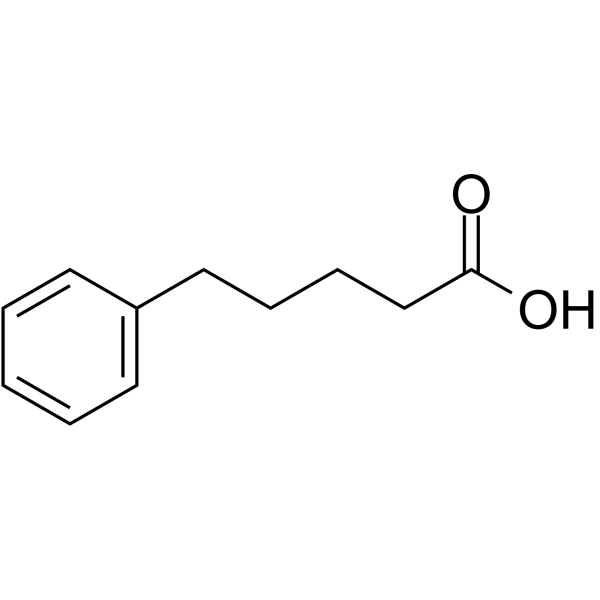
-
GC11101
5-R-Rivaroxaban
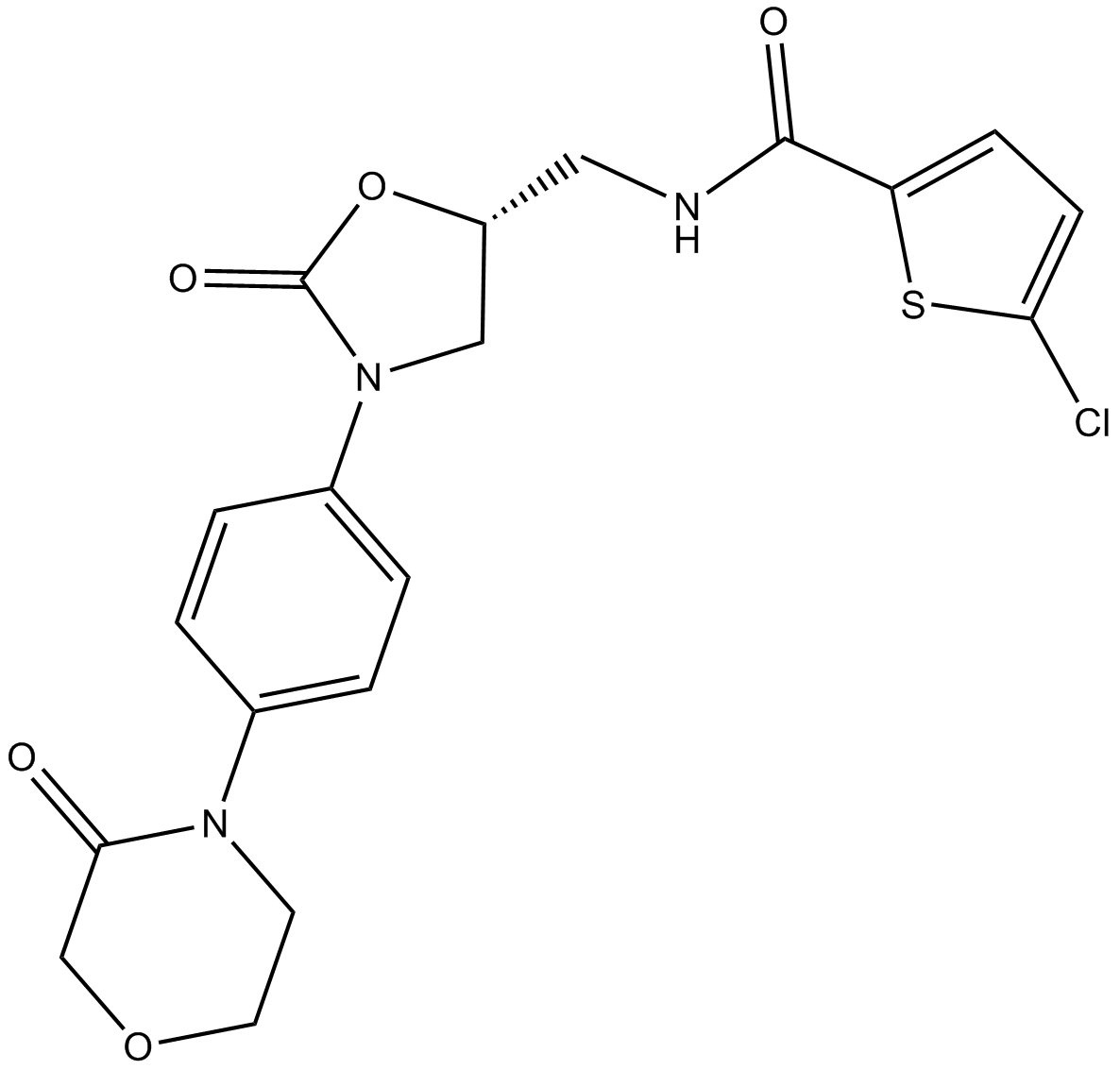
-
GC32410
5a-Pregnane-3,20-dione
5a-Pregnan-3,20-dion ist der endogene Progesteron-Metabolit.
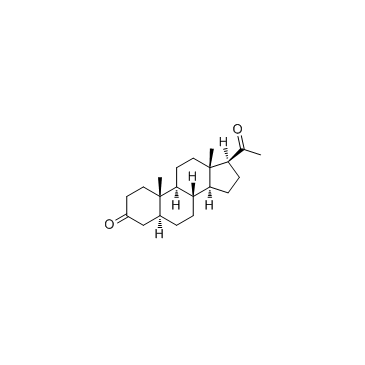
-
GC68374
5a-Pregnane-3,20-dione-d6
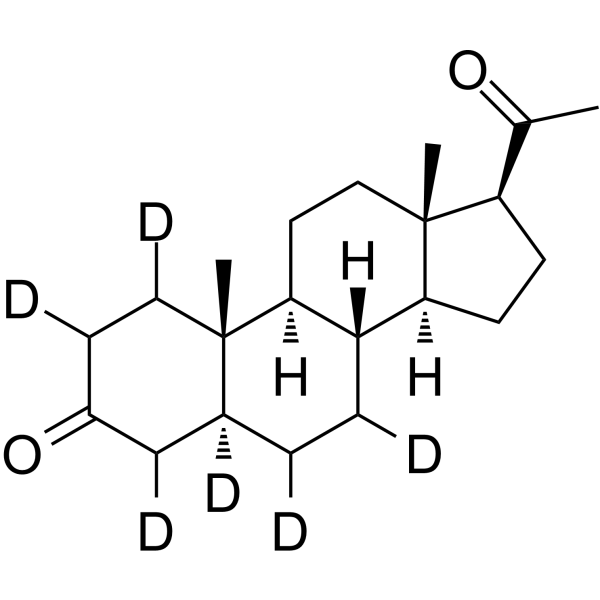
-
GC42586
6α-hydroxy Paclitaxel
6α-Hydroxy Paclitaxel ist ein primÄrer Metabolit von Paclitaxel. 6α-hydroxy Paclitaxel behÄlt eine zeitabhÄngige Wirkung auf die organischen Anionen-transportierenden Polypeptide 1B1/SLCO1B1 (OATP1B1) mit Ähnlicher Hemmkraft wie Paclitaxel, wÄhrend es keine zeitabhÄngige Hemmung von OATP1B3 mehr zeigte. 6α-Hydroxy-Paclitaxel kann fÜr die Krebsforschung verwendet werden.

-
GC49676
6β-hydroxy Budesonide
A metabolite of budesonide
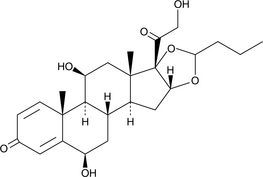
-
GC45969
6β-hydroxy Eplerenone
A major metabolite of eplerenone

-
GC49629
6β-hydroxy Prednisolone
A metabolite of prednisolone

-
GC41424
6(S)-Lipoxin A4
The lipoxins are trihydroxy fatty acids containing a 7,9,11,13-conjugated tetraene.

-
GC49749
6-Deoxypenciclovir
An inactive metabolite of famciclovir

-
GC41224
6-diazo-5-oxo-L-nor-Leucine
6-Diazo-5-oxo-L-nor-Leucin (DON) ist ein Glutamin-Analogon, das Glutaminasen hemmt und ein selektiver, mechanismusbasierter Inaktivator von glutaminverwendenden Enzymen ist [1-3].

-
GC42578
6-Formylpterin
Xanthine oxidase (XO) generates reactive oxygen species, including hydrogen peroxide (H2O2), as it oxidizes specific substrates in the presence of water and oxygen.

-
GC18632
6-hydroxy Bexarotene
6-hydroxy Bexarotene is an oxidative metabolite of bexarotene , a high-affinity ligand for retinoid X receptors (RXRs).
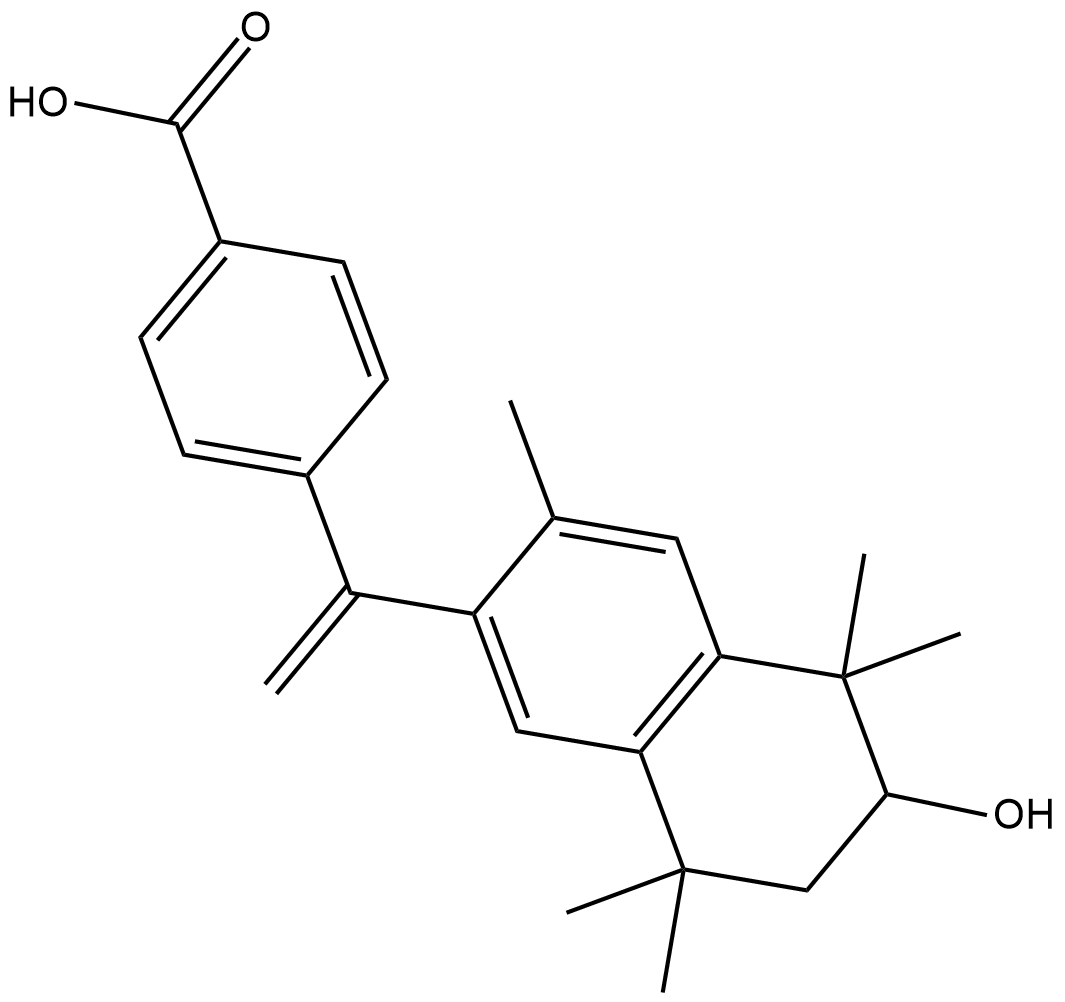
-
GC42580
6-hydroxy Chlorzoxazone
6-hydroxy Chlorzoxazone is a metabolite of chlorzoxazone.

-
GC18219
6-hydroxy Warfarin
6-hydroxy Warfarin is a metabolite of (+)-warfarin , which is a weaker vitamin K antagonist than (-)-warfarin .
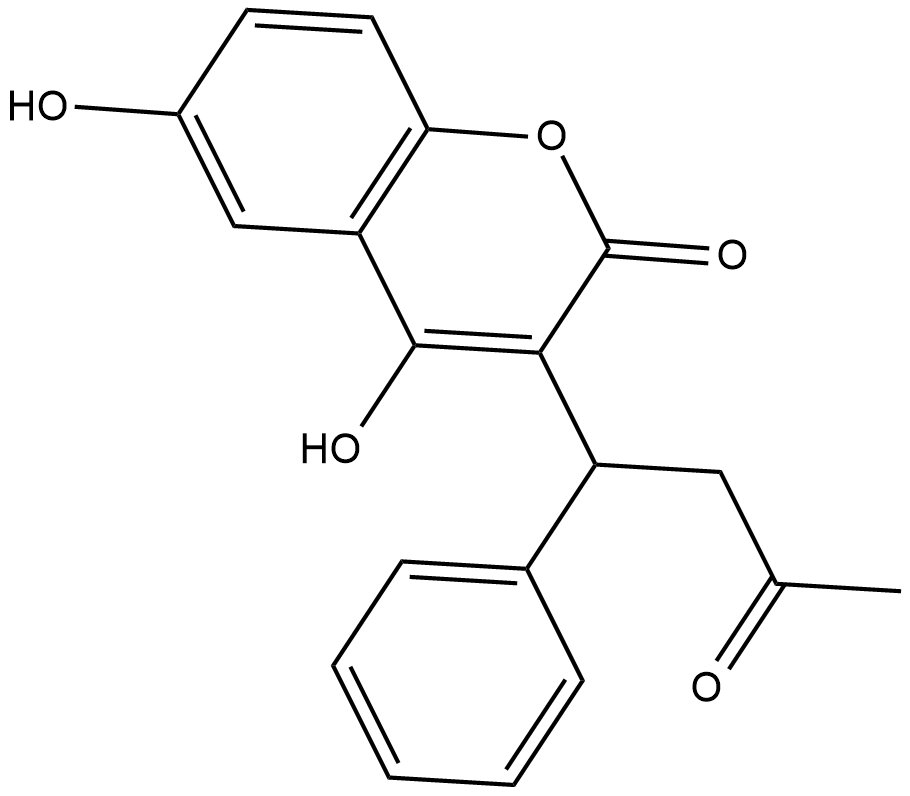
-
GC67988
6-Hydroxybenzbromarone
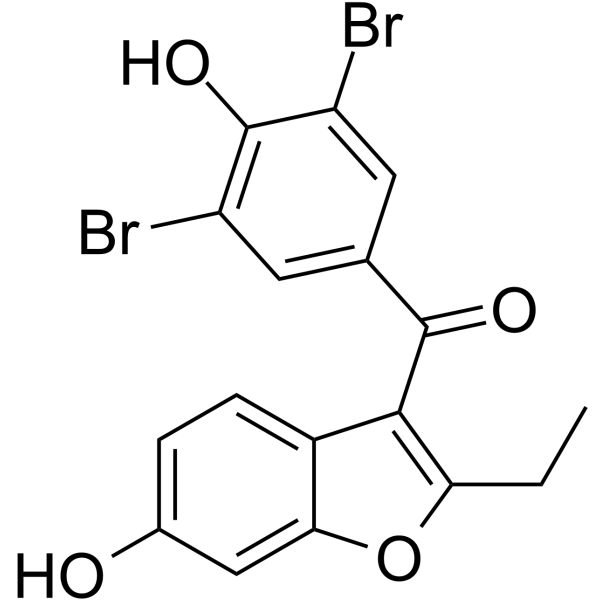
-
GC33704
6-Hydroxymelatonin
6-Hydroxymelatonin ist ein primÄrer Metabolismus von Melatonin, das durch Cytochrom P450 (CYP) 1A2 metabolisiert wird.
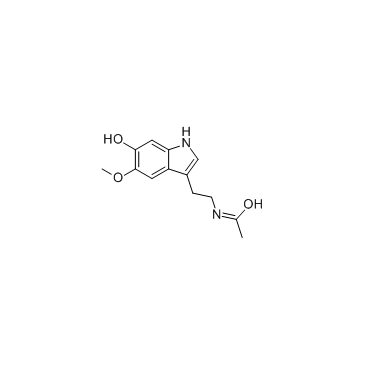
-
GC38278
6-Hydroxynicotinic acid
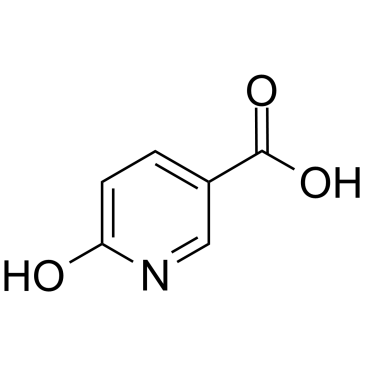
-
GC10067
6-Hydroxynicotinic acid
6-HydroxynicotinsÄure ist ein kÖrpereigener Metabolit.
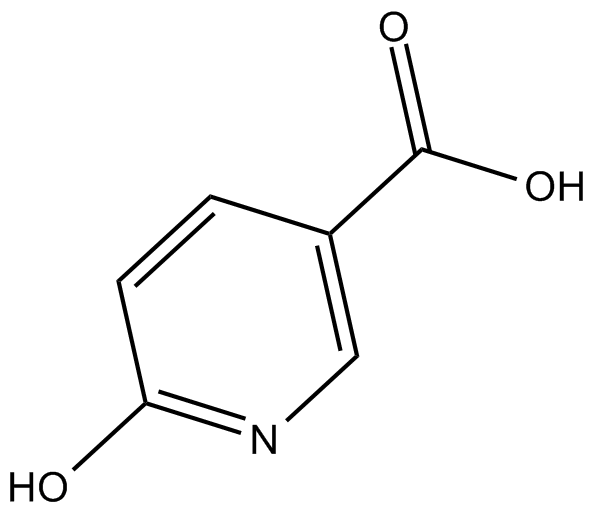
-
GC62816
6-Hydroxypyridin-2(1H)-one hydrochloride
6-Hydroxypyridin-2(1H)-on-Hydrochlorid ist ein kÖrpereigener Metabolit.
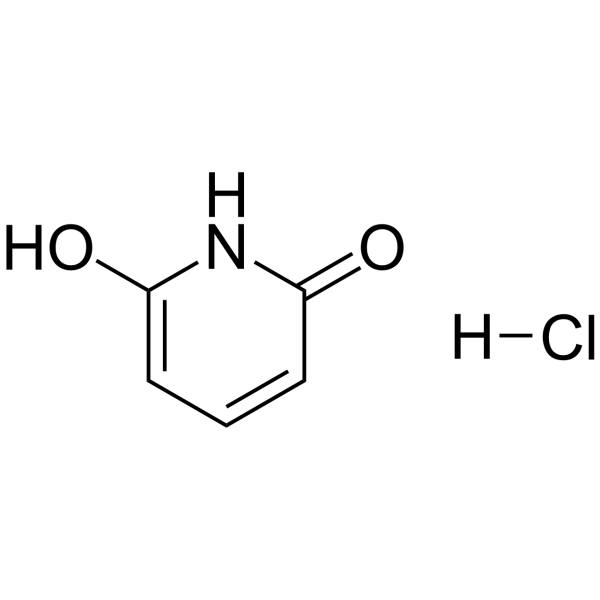
-
GC49235
6-Methylmercaptopurine
A metabolite of 6-mercaptopurine

-
GC49488
6-Methylmercaptopurine-d3
An internal standard for the quantification of 6-MMP

-
GC64741
6-Methylnicotinamide
6-Methylnicotinamid, ein Derivat von Nicotinamid, ist ein kÖrpereigener Metabolit.
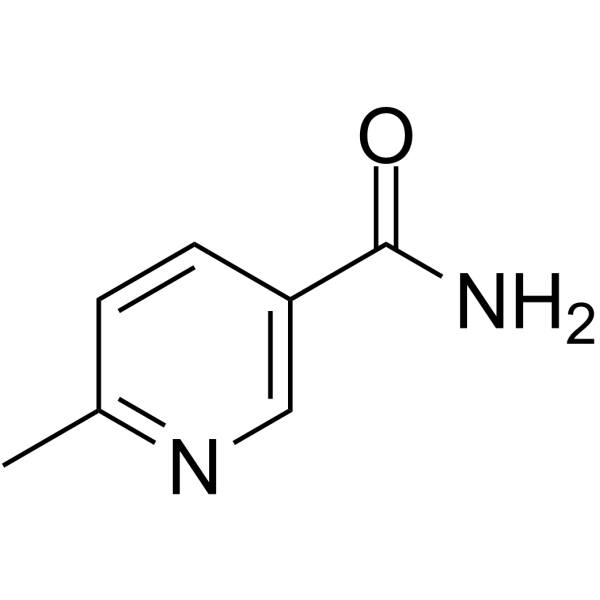
-
GC48721
6-O-Demethyl Griseofulvin
A metabolite of griseofulvin

-
GC42584
6-O-desmethyl Donepezil
6-O-desmethyl Donepezil is an active metabolite of the acetylcholinesterase inhibitor donepezil.

-
GC65015
6-Phosphogluconic acid trisodium
6-PhosphogluconsÄuretrinatrium ist ein potenter und kompetitiver Phosphoglucoseisomerase (PGI)-Hemmer mit einem Kis von 48 μM fÜr Glucose-6-phosphat und 42 μM fÜr Fructose-6-phosphat.
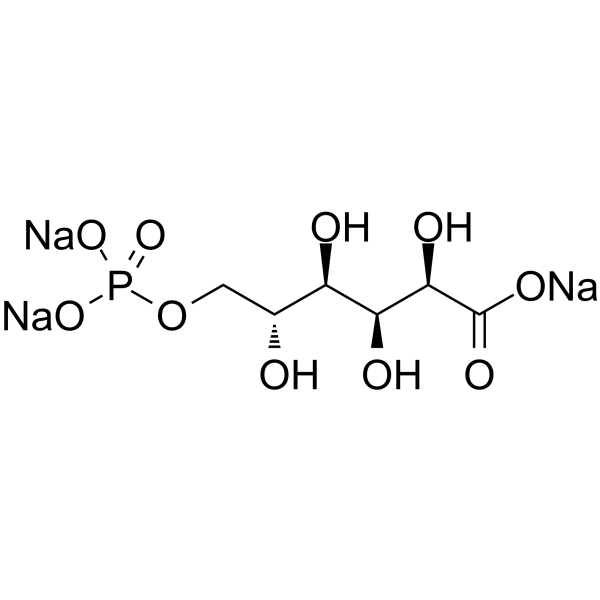
-
GC50613
673 A
ALDH1A inhibitor; depletes CD133+ cancer stem cells (CSC)

-
GC18335
6β-hydroxy Dexamethasone
6β-hydroxy Dexamethasone is a metabolite of dexamethasone that is more hydrophilic than the parent compound.
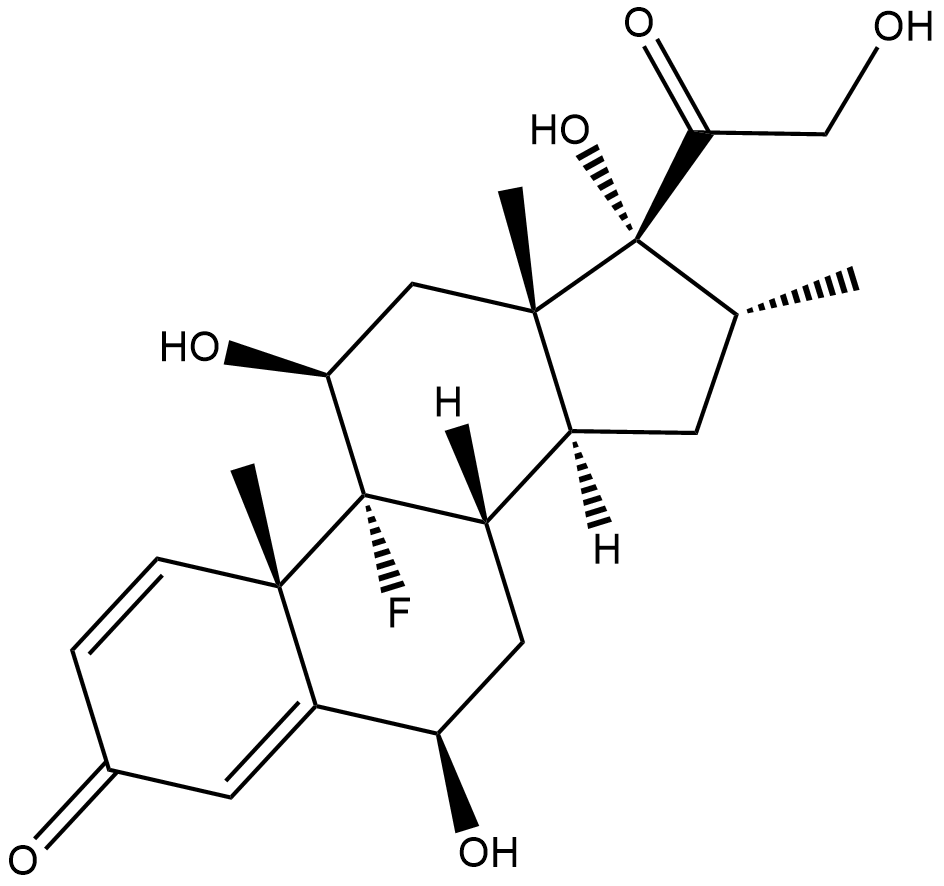
-
GC40087
7α-hydroxy-4-Cholesten-3-one
7α-Hydroxy-4-Cholesten-3-on ist ein Zwischenprodukt bei der Synthese von GallensÄuren aus Cholesterin.

-
GC49298
7α-Thiomethylspironolactone
A major metabolite of spironolactone

-
GC49391
7α-Thiospironolactone
An active metabolite of spironolactone

-
GC46732
7(S),17(S)-dihydroxy-8(E),10(Z),13(Z),15(E),19(Z)-Docosapentaenoic Acid
A metabolite of DPA with antiinflammatory properties

-
GC10533
7,8-dihydro-L-Biopterin
7,8-Dihydro-L-Biopterin ist ein Oxidationsprodukt von Tetrahydrobiopterin.
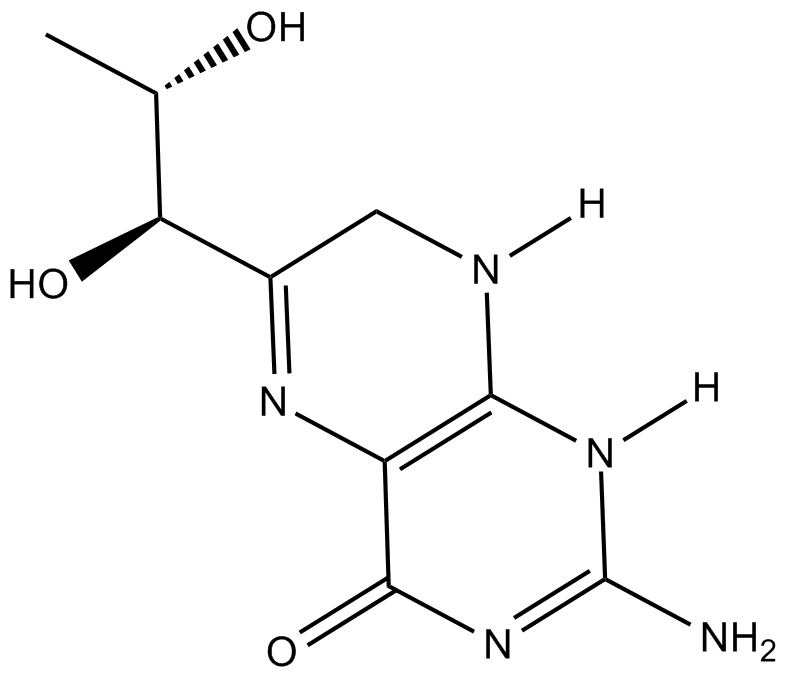
-
GC45673
7,8-Dihydroneopterin
7,8-Dihydroneopterin, ein EntzÜndungsmarker, induziert zellulÄre Apoptose in Astrozyten und Neuronen durch VerstÄrkung der Stickoxid-Synthase (iNOS)-Expression.

-
GC33450
7-Dehydrocholesterol
7-Dehydrocholesterin ist ein biosynthetischer VorlÄufer von Cholesterin und Vitamin D3.
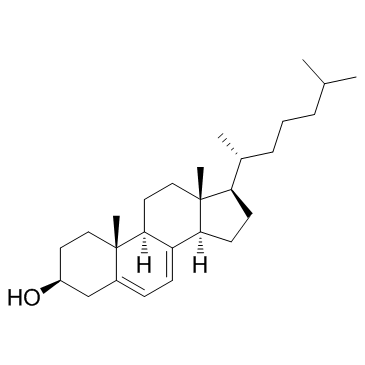
-
GC40978
7-epi Maresin 1
7-epi Maresin 1 is the inactive 7(S) epimer of Maresin 1, which contains a 7(R) hydroxyl group.

-
GC48649
7-hydroxy Chlorpromazine (hydrochloride)
An active metabolite of chlorpromazine

-
GC42606
7-hydroxy Coumarin Glucuronide (sodium salt)
7-hydroxy Coumarin glucuronide is a 7-hydroxy coumarin phase II metabolite that can be used as a standard for the analysis of 7-hydroxy coumarin metabolism.

-
GC42607
7-hydroxy Coumarin sulfate (potassium salt)
7-hydroxy Coumarin sulfate is a phase II metabolite of coumarin that can be used as an internal standard for the analysis of 7-hydroxy coumarin metabolism using GC- or LC-MS.

-
GC49748
7-hydroxy Etodolac
An inactive metabolite of etodolac

-
GC49051
7-hydroxy Methotrexate
7-Hydroxy-Methotrexat ist ein Hauptmetabolit von Methotrexat

-
GC42608
7-hydroxy Methotrexate (sodium salt)
7-hydroxy Methotrexate (7-hydroxy MTX) is a phase I metabolite of MTX, which is converted by hepatic aldehyde oxidases.
